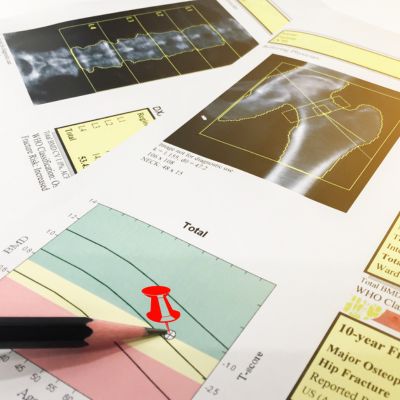Exercise for Osteopenia and Osteoporosis: Strengthening Bones for a Healthier Future
Osteopenia and osteoporosis are conditions characterised by decreased bone density, making bones fragile and susceptible to fractures. While medications are crucial in managing these conditions, incorporating exercise into your routine can be equally beneficial. In this blog, we’ll explore the importance of exercise in promoting bone strength and guide the best exercises for osteoporosis.
The Power of Exercise:
Regular physical exercise has been shown to positively impact bone health, particularly for individuals with osteopenia and osteoporosis. Engaging in weight-bearing exercises helps stimulate bone remodelling, improve bone mineral density, and strengthen the skeletal structure. It’s important to note that exercise alone cannot cure osteoporosis, but it can significantly contribute to reversing some of the bone loss and assisting in the overall management and prevention of further bone loss.
Exercises for Osteoporosis:
- Weight-Bearing Exercises: Activities that involve bearing your body weight through your bones are highly beneficial. These include brisk walking, dancing, stair climbing, and hiking. These exercises stress your bones, stimulating them to become stronger over time. Our team can help with targeted exercises to assist with specific exercises to build bone strength in the spine, hip, wrist or lower limb.
- Resistance Training: Incorporating resistance exercises, such as lifting weights or using resistance bands, helps to build muscle strength, which in turn supports and protects the bones. It’s essential to perform these exercises correctly and with guidance from a qualified physiotherapist to ensure safety and effectiveness.
- Balance and Posture Exercises: Exercises that improve balance and posture can help reduce the risk of osteoporosis-related falls and fractures. These exercises enhance stability, flexibility, and body awareness, promoting overall bone health.
- Consult a qualified professional: Considering the unique needs of individuals with osteopenia or osteoporosis, it’s highly recommended to seek guidance from a qualified physiotherapist, at Physica, we have a team with a special interest in bone strength. They can design a customised exercise program tailored to your specific needs, considering your medical history, current fitness level, and goals. It is essential you bring along your bone density results to help us best manage your bone health.
Collaboration with Medical Professionals:
At Physica, we emphasize the importance of collaboration with your healthcare team. Our experienced professionals work closely with your GP or endocrinologist to ensure that your exercise program aligns with your overall treatment plan and individual requirements. This collaborative approach ensures your safety and maximizes the effectiveness of your exercise routine.
Conclusion:
Exercise is a vital component in managing osteopenia and osteoporosis. Incorporating weight-bearing, resistance, balance, and posture exercises into your routine can strengthen your bones, improve muscle strength, and enhance overall bone health. However, consulting with a professional who can guide you through a personalised exercise program that suits your specific needs is crucial. Together, let’s take proactive steps towards a healthier, stronger future.

